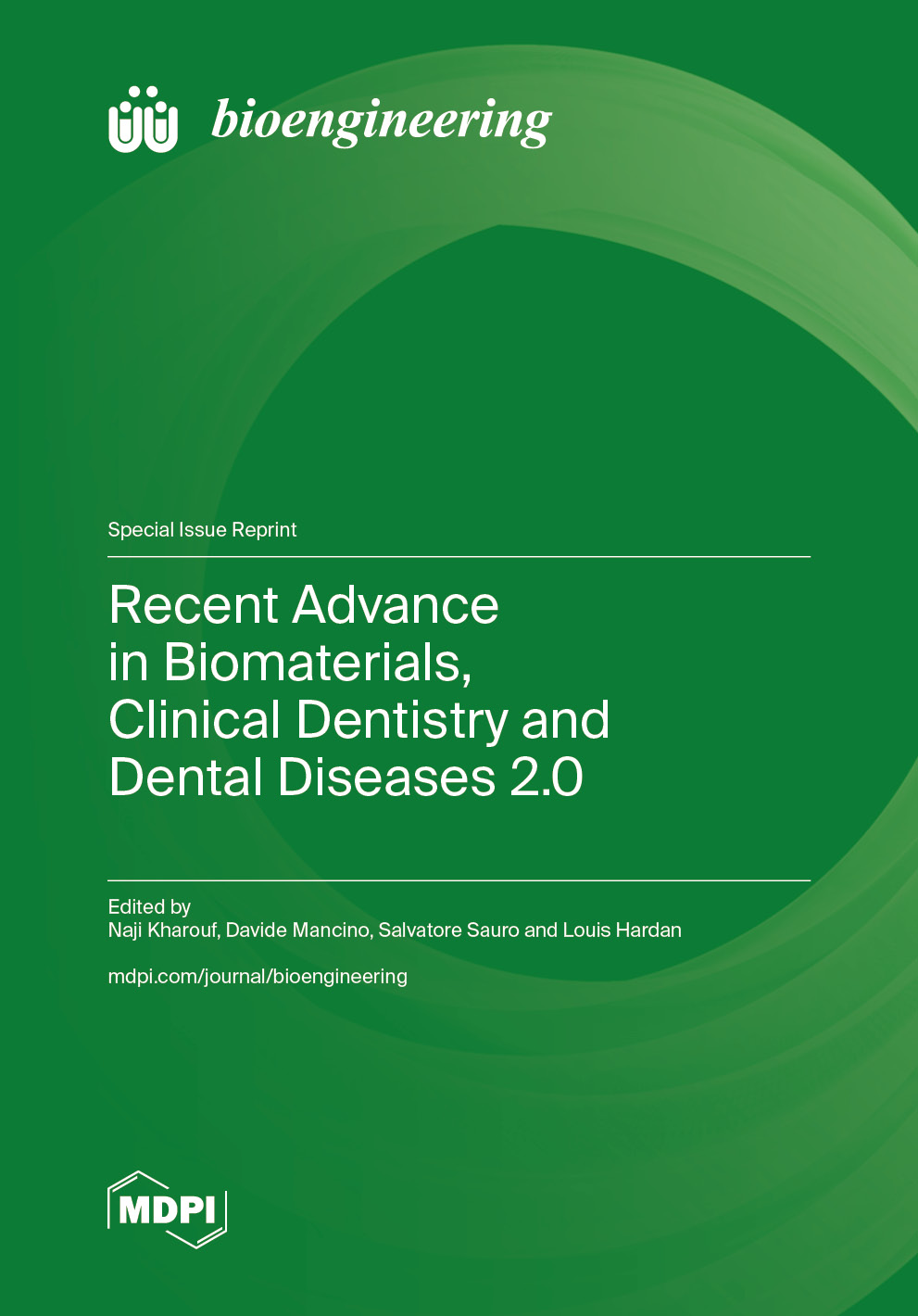Recent Advance in Biomaterials, Clinical Dentistry and Dental Diseases 2.0
A special issue of Bioengineering (ISSN 2306-5354). This special issue belongs to the section "Regenerative Engineering".
Deadline for manuscript submissions: closed (31 August 2023) | Viewed by 14172
Special Issue Editors
2. Department of Biomaterials and Bioengineering, INSERM UMR_S 1121, Strasbourg University, 67000 Strasbourg, France
Interests: biomaterials; bonding; endodontic; polyphenols; bioceramics
Special Issues, Collections and Topics in MDPI journals
2. Department of Endodontics, Faculty of Dental Medicine, Strasbourg University, 67000 Strasbourg, France
3. Pôle de Médecine et Chirurgie Bucco-Dentaire, Hôpital Civil, Hôpitaux Universitaire de Strasbourg, 67000 Strasbourg, France
Interests: endodontics; root canal treatment; 3D printing; pulp regeneration; tooth anatomy
Special Issues, Collections and Topics in MDPI journals
Interests: enamel-dentin adhesion; dentine permeability, remineralisation; minimally invasive cariology and restorative dentistry
Special Issues, Collections and Topics in MDPI journals
Interests: dental adhesive; antibacterial activity; restoration; endodontically treated tooth; dental biomaterials; resin cement; digital dentistry
Special Issues, Collections and Topics in MDPI journals
Special Issue Information
Dear Colleagues,
This Special Issue is the second edition of the previous release, "Recent Advances in Biomaterials and Dental Disease" (https://www.mdpi.com/journal/bioengineering/special_issues/biomaterials_root).
For this Special Issue, we welcome submissions of original research and review manuscripts, covering all aspects of the development, modification, and use of biomaterials and novel dental devices in clinical and laboratory dentistry. The aim of dental biomaterials is to restore tooth infected tissues, including caries or dental anomalies/diseases. These biomaterials could be used in coronal or radicular parts, including their broad range of applications associated with endodontic treatment, restorative dentistry, pediatric dentistry, orthodontics, implantology, prosthodontics, surgical procedures, and periodontics. Moreover, the next dental care revolution will apply biological activities using bioactive materials which are modified with different bioactive molecules. This Special Issue of Bioengineering on Recent advance in Biomaterials, Clinical dentistry and Dental Disease addresses the role of dental biomaterials in dentistry.
Dr. Naji Kharouf
Dr. Davide Mancino
Prof. Dr. Salvatore Sauro
Prof. Dr. Louis Hardan
Guest Editors
Manuscript Submission Information
Manuscripts should be submitted online at www.mdpi.com by registering and logging in to this website. Once you are registered, click here to go to the submission form. Manuscripts can be submitted until the deadline. All submissions that pass pre-check are peer-reviewed. Accepted papers will be published continuously in the journal (as soon as accepted) and will be listed together on the special issue website. Research articles, review articles as well as short communications are invited. For planned papers, a title and short abstract (about 100 words) can be sent to the Editorial Office for announcement on this website.
Submitted manuscripts should not have been published previously, nor be under consideration for publication elsewhere (except conference proceedings papers). All manuscripts are thoroughly refereed through a single-blind peer-review process. A guide for authors and other relevant information for submission of manuscripts is available on the Instructions for Authors page. Bioengineering is an international peer-reviewed open access monthly journal published by MDPI.
Please visit the Instructions for Authors page before submitting a manuscript. The Article Processing Charge (APC) for publication in this open access journal is 2700 CHF (Swiss Francs). Submitted papers should be well formatted and use good English. Authors may use MDPI's English editing service prior to publication or during author revisions.










